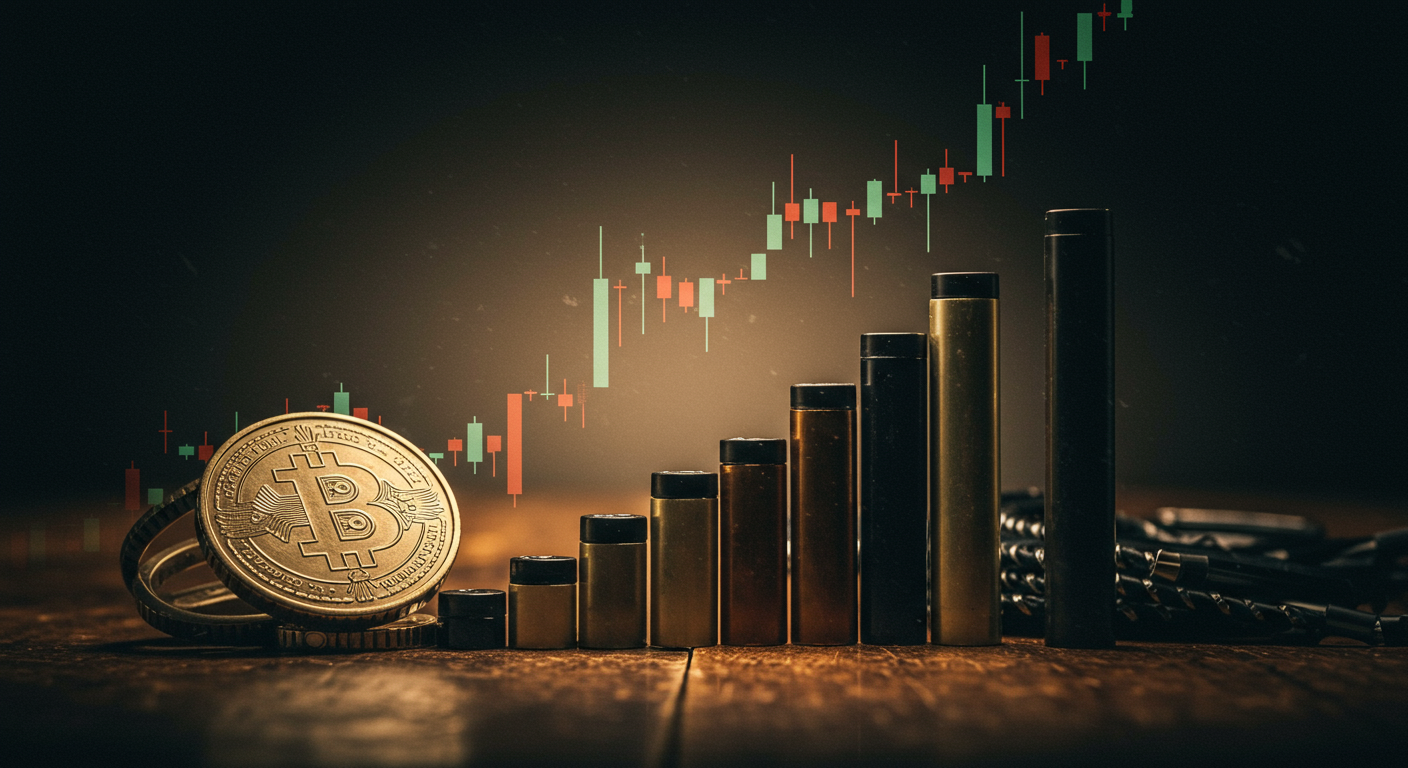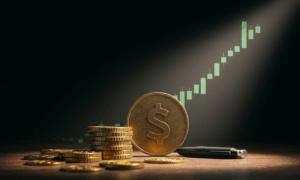Recent inflationary pressures are once again in the spotlight, and this time, the focus is on what businesses are paying before goods and services even reach consumers. We’re diving into the latest figures from the Producer Price Index (PPI), a crucial economic indicator that often flies under the radar but has significant implications for your wallet and the overall economic landscape. This article will break down what these new numbers mean, why they matter, and how they could affect everything from your grocery bill to broader financial trends. Understanding these producer-level price shifts is key to anticipating future economic movements.
So, what exactly is this Producer Price Index, often abbreviated as PPI? It measures inflation from the sellers’ perspective. The PPI tracks the average change over time in the selling prices received by domestic producers for their output, encompassing goods, services, and construction. You might be more familiar with the Consumer Price Index (CPI), which measures the prices you pay as a consumer for a basket of goods and services. The PPI, on the other hand, captures price changes at the wholesale level – essentially, the costs businesses face when sourcing their materials and services.
Why should you care about wholesale prices? Well, the PPI is often considered a leading indicator for consumer inflation. If producers are paying more for raw materials, energy, or intermediate goods, they are more likely to pass those increased costs on to consumers in the form of higher retail prices. So, a jump in the PPI can signal that higher consumer prices are on the horizon. It’s a vital tool for economists, policymakers, and businesses to gauge underlying inflationary trends in the production pipeline.
Let’s look at the most recent data that’s causing a stir. The latest report for April 2024 revealed that the Producer Price Index for final demand saw a significant month-over-month increase of 0.5%. This figure was notably higher than many economists’ forecasts, which had generally hovered around a 0.3% rise. On a year-over-year basis, producer prices were up 2.2%, marking an acceleration from previous readings and also slightly above expectations.
A substantial portion of this monthly increase stemmed from the services sector, with goods prices also adding to the upward trend. This kind of detail is important because it helps pinpoint where inflationary pressures are building most intensely within the production chain. For instance, increases in the cost of transportation, warehousing, or specific business services can ripple through many other industries. The fact that these figures surpassed expectations suggests that the journey to taming inflation might still have a few bumps in the road.
An unexpected jump in the Producer Price Index isn’t just an abstract economic statistic; it has tangible consequences for different players in the economy.
For Businesses:
When producers face higher input costs – be it raw materials, components, or services – their profit margins come under pressure. Businesses have a few options: they can absorb these higher costs, which eats into their profits; they can try to become more efficient to offset the increases; or, most commonly, they can pass these costs on to their customers. This recent PPI data suggests that many businesses are indeed experiencing rising operational costs. Small businesses, often with tighter margins, may struggle more than larger corporations to absorb these rising costs, impacting their competitiveness. Investment decisions might also be re-evaluated if cost pressures are expected to persist.
For Consumers:
This is where the PPI often hits home. If businesses decide to pass on their increased costs, consumers will likely see higher prices for everyday goods and services. Consider a loaf of bread: if costs for flour, energy, and transport rise (reflected in PPI components), the shelf price likely increases. This directly impacts your cost of living. While not every increase in the PPI translates immediately or fully into consumer prices, it’s a strong indicator of future trends you might see at the checkout.
For the Broader Economy and the Federal Reserve:
Persistent increases in producer prices can signal entrenched inflationary pressures throughout the economy. This is a major concern for central banks like the U.S. Federal Reserve (the Fed), whose mandate includes maintaining price stability. When the Fed sees data like the recent PPI figures, it might become more cautious about easing monetary policy – for example, by delaying anticipated interest rate cuts. Higher interest rates make borrowing more expensive, which can cool down demand and, eventually, inflation. This, however, also risks slowing economic growth. This PPI report adds another piece to the complex puzzle the Fed is trying to solve: how to control inflation without triggering a recession. You can learn more about how these factors intertwine on our page dedicated to the Economy.

It’s crucial to place this single Producer Price Index report within a broader context. The global economy has been navigating a period of significant price volatility following the pandemic, driven by factors like supply chain disruptions, shifts in consumer demand, geopolitical events, and tight labor markets. While some pressures have eased, recent PPI data suggests the path to stable, low inflation remains uneven.
The relationship between the PPI, the Consumer Price Index (CPI), and monetary policy is a dynamic interplay. Typically:
- Rising PPI can signal future rises in CPI.
- Persistently high CPI (and PPI) prompts central banks like the Federal Reserve to consider or maintain tighter monetary policy (e.g., higher interest rates).
- Tighter monetary policy aims to reduce demand, thereby easing inflationary pressures, but can also slow economic activity.
This recent PPI uptick could indicate that underlying demand in some sectors remains robust, or that certain supply-side constraints are still exerting upward price pressures. For instance, if energy prices or shipping costs (key components of PPI) rise, this affects a vast array of goods. Economists and market watchers will be scrutinizing upcoming CPI data very closely to see how much of these producer price increases are being passed through to consumers. It also fuels debate on inflation’s ‘stickiness’ – is it temporary or a more persistent economic feature?
So, what does a concerned citizen or savvy saver do with this information about rising producer prices? This data point, among many, underscores the importance of sound financial planning and staying informed. Inflationary pressures impact daily budgets and long-term Savings goals.
Here are a few general thoughts:
- Budget Awareness: If producer prices are rising, it’s wise to anticipate potential increases in consumer goods and services. Reviewing your budget for flexibility might be prudent.
- Stay Diversified: From a financial strategy perspective, economic uncertainty often underscores the importance of diversification. Different assets perform differently in various inflationary environments.
- Keep Learning: The economic landscape is always shifting. Understanding key indicators like the PPI helps you make more informed decisions. Staying updated with reliable economic analysis, like ours at MoneyMindsGroup (explore our Home page for more insights), empowers you.
Remember, economic data provides clues, not crystal balls. The next set of figures for PPI, CPI, employment, and growth will provide further insights into the direction of the economy.
Frequently Asked Questions (FAQ)
- Q1: Is a rising Producer Price Index (PPI) always bad news for the economy?
- Not necessarily. While a sharply rising PPI can signal problematic inflation, a moderate increase can sometimes reflect strong demand and a growing economy. If businesses are confident enough to invest and consumers are actively buying, producers might be able to pass on slightly higher costs. The concern arises when PPI increases are rapid, widespread, outpace wage growth, eroding purchasing power, and risk aggressive central bank tightening that could slow the economy too much. Context is key; a rising PPI in a stagnant economy is more worrying than in a robustly growing one.
- Q2: How quickly do changes in the PPI affect consumer prices (CPI)?
- The pass-through from producer prices to consumer prices isn’t instantaneous or always one-to-one. This depends on several factors:
- Market competition: In highly competitive markets, businesses might absorb some cost increases to avoid losing customers.
- Demand elasticity: Essential goods often see quicker pass-through; businesses are more hesitant with discretionary items.
- Inventory levels: If businesses have large inventories purchased at older, lower prices, they might delay price hikes.
- Stage of production: Raw material price changes (early-stage PPI) take longer to reach consumers than changes in finished goods prices.
Generally, economists estimate that impacts take months to over a year to reflect in the CPI, with services often showing a more direct and sometimes quicker pass-through than complex manufactured goods.



